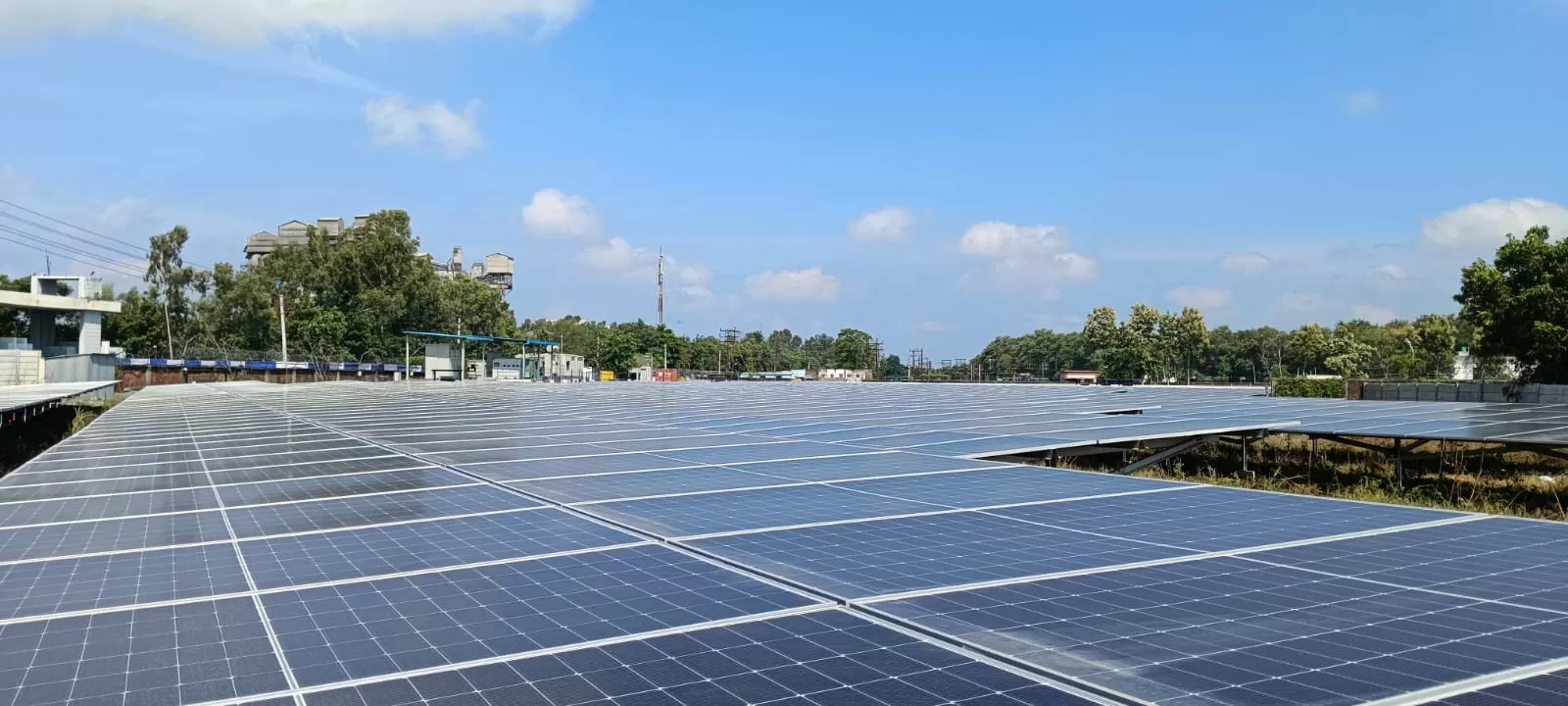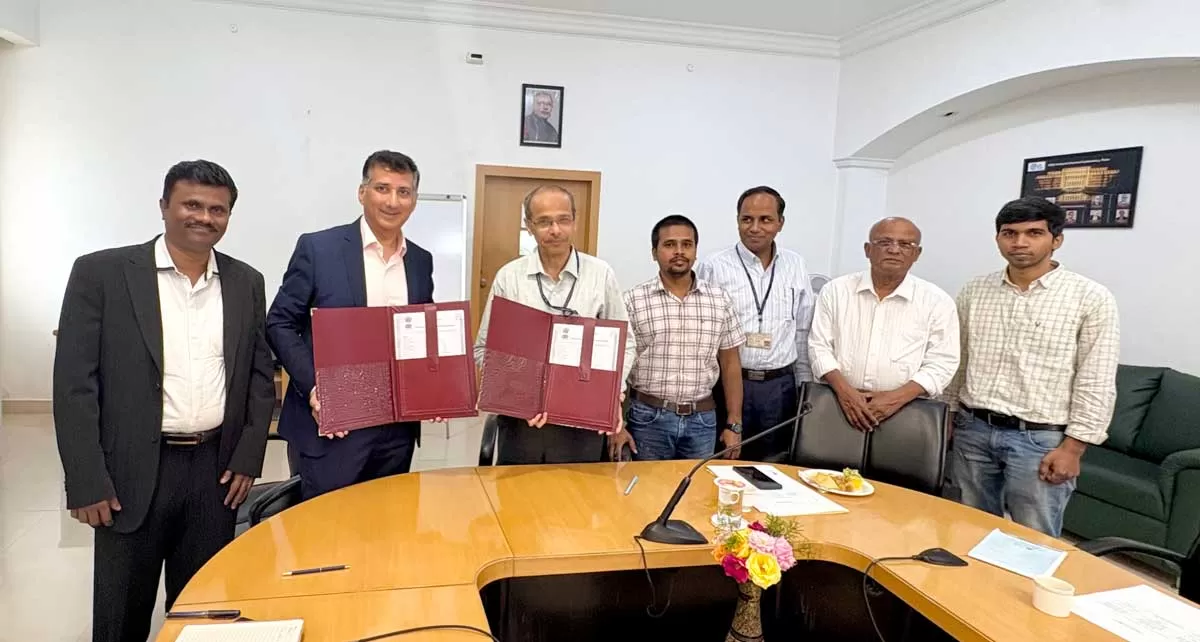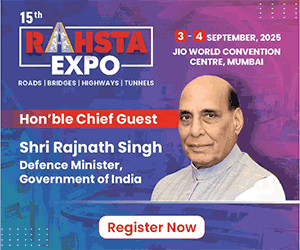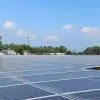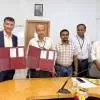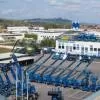In the next of a series of interviews with prominent civil engineers,
CW speaks to
Vijay Sadashiv Ghogare, Executive Engineer, Waghur Dam Division, Water Resources Department, Government of Maharashtra.
His simplicity belies the abundant experience and knowledge he possesses. An Executive Engineer with the Water Resources Department, Government of Maharashtra, Vijay Sadashiv Ghogare maintains the passion and dedication towards his work symbolic of his agricultural background. A topper throughout his school and college years, Ghogare in his 22-year career has been involved in prestigious projects such as Waghur Dam Project, Nira Deoghar Dam, Urmodi project, Khadakwasala Dam Complex, etc. He has also developed the infrastructure of the engineering college where he previously worked as a lecturer. While the engineer in him is quite vocal on the need for powers to allocate more funds for irrigation projects, Ghogare in conversation with CW, is also appreciative of the role of the government in creating cities.
Constructing a dam
Dam construction calls for proper site selection, construction, maintenance of speed, liaising with farmers affected by these projects, and their rehabilitation and resettlement.
Dam designing is mostly dependent on the availability of local materials. As cement and concrete dams incur huge costs, most irrigation projects today are constructed using local soils. We first test the properties of these soils in laboratories and design the dam accordingly. Local materials such as stones, aggregates, black cotton soil, etc, are mostly used. However, if they are not available, we opt for artificial materials such as cement and concrete.
Site selection
The height of the dam is decided based on the availability of water on-site and through a study of the rainfall runoff. As every dam site is unique, we have to offer customised solutions for each project. However, a major challenge in any dam project is the rehabilitation of the project affected people. Also, the presence of different foundations at different sites complicates matters. For instance, though the surface at some sites may be of hard rock, the soil below may be loose. Similarly, in the case of a sand layer, it needs to be removed completely before drilling into the hard rock, jointed rocks and commencement of grouting works.
Challenges involved
A project involving excavation of the foundation of a bridge pier resulted in discovery of hard rock beneath it. When we tried to drill that rock, the drill hole went down immediately and a 3 m layer of slurry water was discovered inside. We had to puncture the rock and go to the next hard rock level and clean that before moving on. This also increased the cost of the project. Besides, we also had to face issues of loose foundations, sand and soil layers, change in course of the river, etc.
Civic issues
Rigid rules, regulations and involvement of multiple authorities are some of the issues that plague the government sector. For instance, the rehabilitation of project affected people requires approvals from various departments related to revenue, finance, town planning, forest and agriculture. These projects also require approvals from the state governments, finance department, forest department and the Centre.
Money matters
Lack of funds is another major issue faced by the sector. If a project costing Rs 500 crore is allotted a fund of Rs 50 crore per year, it might suffice for the first year. But the same amount of Rs 50 crore faces value depreciation in the second year due to an increase in the material and input costs.
Projects executed
I have been involved in major projects such as the Nira-Deoghar Dam, Urmodi and Wakal dams. The Nira-Deogarh dam is 200 ft high and 2 km long. It can store around 11 tmc of water and against this dam, we are also generating 7 MW power. So it ideally is irrigation cum power project. The project also has a canal for irrigating land of up to 200 km.
The Urmodi irrigation scheme is a lift based scheme having a 96 m single lift. We are using, for the first time in Maharashtra, hydraulically operated zero velocity watt valves that act like door closures. Although this technique has been used for small diameter pipelines by the Mumbai and Pune Mahapalika, it is being used for the first time for a major irrigation scheme. It incurs low maintenance and cost, is easy to construct and is a safe technique.
Future layout
The Maharashtra Government has made a complete blueprint of the location of the dams and storage areas to be created. But a dam can also be constructed based on the quantity of the available soil. Ample quantity of sand, morum and black cotton soil can be availed for a 50 km by 10 km dam. Other materials required include cement, concrete and stone masonry. Although we prefer to employ local labourers, these are not always available. So, we engage people from across the country with a majority coming from Bihar and Odisha.
Emergency calls
Floods in Maharashtra occur mostly in July and August. During this time, dams get filled with water and we face difficulties in storing the extra water. In such a situation, the extra water is released in the area's downstream. Since this can result in floods in the surrounding areas, the concerned people in the area need to be alerted.
Cities such as Mumbai and Pune are facing problem of crumbling infrastructure due to large influx of immigrants. To prevent this, we need to develop the infrastructure of smaller cities and rural areas. In that context, Nasik, Satara, Sangli, Kolhapur and Jalgaon have immense potential.
Call for attention
The government has several brilliant engineers, but their talent is often curbed due to rigid restrictions. However, the fact remains that all infrastructural facilities today including good roads, electricity, water, drainage, etc, have been created by the government and engineers have played a huge role in this.
Track Record: Vijay Sadashiv Ghogare
Academic
ME in 'Construction & Management' from the Government College of Engineering, Pune University: 1999
BE (Civil) from the Walchand College of Engineering, Sangli: 1988
Diploma in Civil Engineering from Government Polytechnic College, Pune: 1985
Professional
1992-1995: Jr Engineer in Pimpri Chinchwad Muncipal Corporation
1995-1999: Assistant Executive Engineer at Irrigation Project Sub-Division, Jalgaon
1999-2000: Executive Engineer, Waghur Dam Division, Jalgaon
2000-2005: Executive Engineer, Nira Devghar Project Division, Bhor
2005-2006: Executive Engineer, Urmodi Dam Division, Satara
2006-2009: Executive Engineer, Khadakwasla Irrigation Division, Pune
2009-2012: Engineer, Irrigation Research Division, Pune
2012: Executive Engineer, Waghur Dam Division, Jalgaon
Awards & Recognitions
Late Prof Manohar Dinkar Bhate Memorial Trust (Sangli) Prize for securing highest marks in the subject 'Design of Structures I & II'.
Late RK Phatak Prize and late Prof GD Joglekar prize for securing highest marks in 'Irrigation Engineering' in BE exam.
Challenge zone
Project 1
Project: Nira Deogarh Project, Pune
Period: 2001-2008
Cost: `910.91 crore
Client: Government of Maharashtra
Background: Since the areas around Khandala and Phaltan Taluka of the Satara District receive insufficient rainfall, a storage reservoir was proposed across the Nira River near the Deoghar village of Bhor Taluka in Pune.
Unique features: The project involved the construction of a 2,330 m long earthern dam with a maximum height of 58.25 m above ground level, a gross storage area of 337.390 mcum and a live storage of 332.126 mcum. It also comprises four lift irrigation schemes on the right bank canal having a total length of 135 km.
Challenges: The project faced multiple challenges including opposition from farmers, inconsistencies in foundation, unexpected floods, the need to construct alternative roads to areas submerged due to storage of dam water and new electricity lines for affected villages.
PROJECT 2
Project: Urmodi Dam Project
Period: 1995-2009
Cost: `1,183 crore
Client: Government of Maharashtra
Background: The project involved the construction of a storage reservoir across the river Urmodi at Parali, which is a right bank tributory of river Krishna with a supplementary storage tank across Karhira Nalla, tributory of river Urmodi at Ambale. Unique features: The plan involved the irrigation of 8,300 hectare in Satara taluka, 9,725 hectare in Khatav taluka and 9,725 hectare in Man taluka by canals.
Challenges: Amongst the various problems faced at the execution stage, post site selection, the project faced opposition from the land owners and slow clearances from various government departments. Also, litigation issues arising out of contractual obligations and non-availability of construction materials were challenging. Unforeseen errors like additional land getting submerged/inundated due to improper survey by past officers, loss in storage of reservoir due to silt deposition led to reduction of irrigation potential for the project. Breaches in canal alignment also posed challenges.
PROJECT 3
Project: Waghur Irrigation Project, Jalgaon
Period: 1976-2015
Cost: `1,183.55 crore
Client: Government of Maharashtra
Background: Due to scanty rainfall in Jalgaon taluka, less than 700 mm soil is fertile. While there is scarcity of drinking water around the villages, this is an ideal dam site to provide drinking water to the city of Jalgaon with a population of more than 6 lakh. Unique features: The project involves the construction of a 669.30 m long earthen dam with a maximum height of 27.50 m and a 426.70 m long masonry/concrete dam with 297.45 m long ogee type spillway having 20 radial gates of size 12 m x 8 m above ground level with a gross storage area of 325.00 mcum and live storage of 248.00 mcum. The project also comprises one lift irrigation schemes on upstream of Waghur dam. Further, there is a 1.0 MW hydroelectric project involving 23 km right bank canal and 16 km left bank canal having an irrigation potential of 24,884 hectare.
Challenges: There has been strong opposition and resistance from farmers who are getting affected by the dam, rehabilitation and resettlement of project affected persons, six fully affected villages and one partially affected village required to be shifted. A four hundred kv high tension electric tower line is required to be shifted and the project is facing funding issues as well.
To share your engineering experience with us, write in at feedback@ASAPPmedia.com
